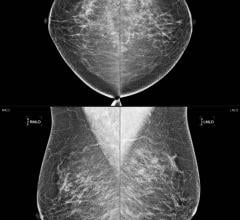April 1, 2011 – The growth and spread of breast cancer tumors may be delayed with a promising treatment that combines two innovative strategies: blocking the enzyme needed to "energize" cancer cells and infusing a potent drug directly into the tumor. The treatment, which minimizes exposure to healthy tissues, was reported by researchers at the Society of Interventional Radiology's (SIR) 36th Annual Scientific Meeting in Chicago.
"Once breast cancer metastases have been detected, current treatments, such as surgical resection or tumor removal, may be ineffective,” said Jeff H. Geschwind, M.D., FSIR, professor of radiology, surgery and oncology and director of vascular and interventional radiology at Johns Hopkins University School of Medicine in Baltimore. “We've found a way to keep a breast cancer tumor dormant—thus potentially increasing the likelihood that a tumor can be treated successfully. Our study shows that an ultrasound-guided intra-tumoral treatment with a drug called 3-bromopyruvate (3-BrPA) may be a very promising new therapy for patients with breast cancer that delays tumor growth and spread."
Increased awareness and screening has increased the likelihood of diagnosing early-stage cancer tumors, and breast cancer is treated in several ways, depending on the kind of breast cancer and how far it has spread, said Geschwind.
"However, a significant number of patients experience treatment failure, developing local tumor recurrence or metastatic disease after an initial response to treatments like chemotherapy and radiation," he explained. "Metastatic spread may occur in 50 percent of cases with apparently localized breast cancer, and nearly 30 percent of patients with lymph node-negative disease will develop distant metastases within five years—underlining the importance of the development of novel, targeted, minimally invasive treatment strategies for tumor control and prevention.”
In animal studies, the research team has shown how interventional radiologists are uniquely positioned to combine their basic science knowledge—in this case resulting in the exploitation of tumor metabolism as a target for breast cancer therapy—with their vast experience in minimally invasive treatment strategies.
"Breast tumor cells depend on a metabolic pathway called glycolysis to generate the energy required for their malignant growth. By inhibiting a specific enzyme with the anti-glycolytic agent 3-BrPA, the energy production required for tumor cell growth and spread is blocked," said Geschwind. "Disrupt glycolysis and cancer cells are unable to produce enough energy to survive," he said.
The researchers were then able to maximize the amount of drug delivered to a tumor by infusing the potent drug directly into the tumor—using imaging to guide them—and minimizing exposure of healthy tissue to the therapy.
"The biological targeting abilities of anti-glycolytic treatment combined with an image-guided minimally invasive delivery strategy is a promising approach to reducing the growth and spread of breast cancer in patients," said Geschwind.
"In our study, a statistically significant difference in tumor volume was observed. Our results support the continuing development of this highly innovative interventional radiology approach for the safe and effective treatment of breast cancer," he added. "Before we can test our novel treatment strategy in individuals with breast cancer, it is important to perform additional animal studies of a larger size to confirm the efficacy of the treatment and to verify that there are no toxic effects on the normal tissues."
For more information: www.SIRweb.org


 July 29, 2024
July 29, 2024 








